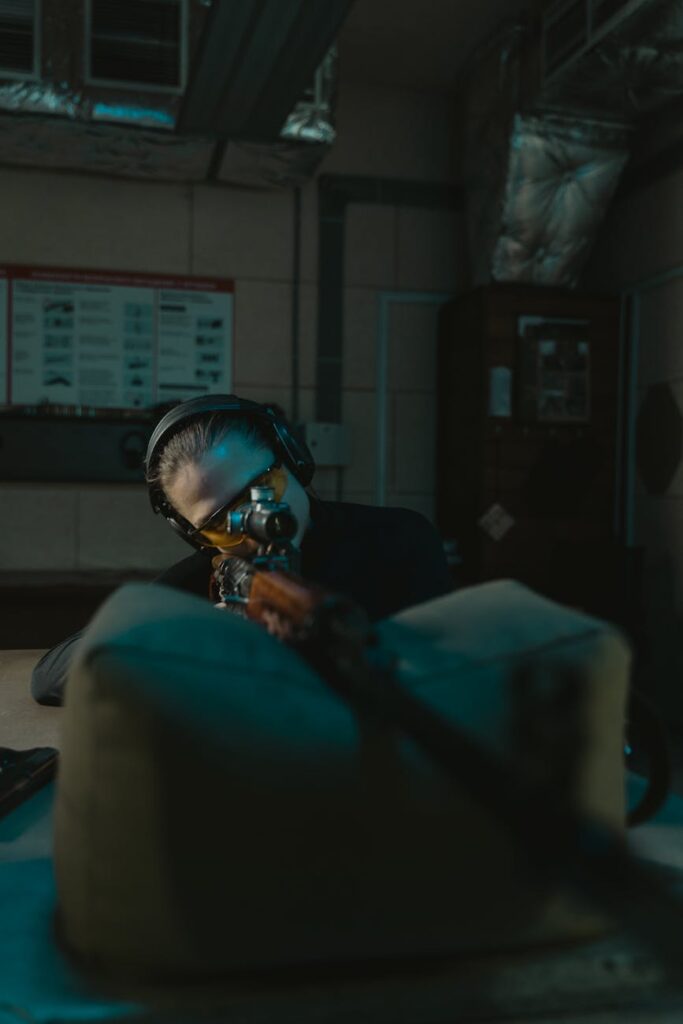Understanding Lens Coatings
When you’re in the market for a new optical device, such as a rifle scope, understanding the importance of lens coatings is key to choosing a rifle scope that will serve you well in various lighting conditions and environments.
Importance of Lens Coatings
Lens coatings are essential for enhancing the performance of your rifle scope. Without these coatings, you can lose a significant amount of light—about 4%-6% per lens surface. This might not sound like much, but considering a high-end side focus scope with 13-14 pieces of glass, the cumulative effect can be a substantial 30%-40% loss of light transmission.
Coatings are applied to the lenses to increase light transmission by reducing reflection. This allows more light to pass through the scope and reach your eye, resulting in a brighter and clearer image. Quality coatings can push light transmission rates north of 95%, which is particularly advantageous in low-light conditions, such as dawn or dusk when wildlife is most active (Vector Optics).
Types of Lens Coatings
There are several types of lens coatings, and they vary in complexity and effectiveness:
- Single-Coated: A single layer of coating on at least one lens surface can reduce the loss of light transmission to around 2%.
- Multi-Coated: Multiple layers are applied to one or more lens surfaces to further reduce light reflection down to about 0.1%.
- Fully Coated: All air-to-glass surfaces have at least one layer of coating.
- Fully Multi-Coated: All air-to-glass surfaces have multiple layers, which enhances light transmission significantly.
| Coating Type | Description | Light Transmission Loss |
|---|---|---|
| Uncoated | No coatings applied | 4%-6% per lens surface |
| Single-Coated | Single layer on one lens surface | Approx. 2% |
| Multi-Coated | Multiple layers on one or more surfaces | Down to approx. 0.1% |
| Fully Coated | Single layer on all air-to-glass surfaces | Varies |
| Fully Multi-Coated | Multiple layers on all air-to-glass surfaces | Minimal |
As Optics Trade explains, fully multi-coated optics are becoming the industry standard for high-quality scopes, offering improved light transmission rates and better overall performance. These coatings are applied in layers of different materials, each designed to maximize the passage of light through the scope.
In your quest for the perfect rifle scope, you may also come across specialized coatings designed for specific purposes, such as reducing glare or enhancing color contrast. These can be particularly useful if you have specific shooting needs, such as optics for deer hunting or best optics for competition shooting.
When you’re mounting a rifle scope or sighting in your rifle scope, remember that the coatings also play a role in the longevity and durability of the scope. A well-coated lens is more resistant to scratching and can withstand the elements better, ensuring that your investment remains in top condition for longer. Always consider the quality and type of lens coatings when selecting your next rifle scope to ensure optimal performance and durability.
Exploring Rifle Scope Features
When considering optics, the features of a rifle scope play a critical role in its performance and suitability for your shooting needs. Let’s delve into two key aspects: magnification and image quality, and reticles for precision shooting.
Magnification and Image Quality
Magnification is a primary feature when selecting a rifle scope. It determines how much closer your target appears compared to the naked eye’s view. You’ll come across two main types: variable scopes, which offer a range of magnification powers, and fixed scopes, which have a single magnification level that remains constant. While variable scopes provide flexibility, fixed scopes tend to deliver a sharper image and are often more budget-friendly.
Here’s what you need to consider regarding magnification:
- The distances you typically shoot at
- The size of your targets
- Whether your targets are stationary or moving
The level of magnification affects your field of view, the weight of the scope, and sensitivity to movement. For instance, while hunting in ranges between 50 and 500 yards, a magnification range of 3-15 is generally sufficient, offering a broad field of view for close encounters and enough zoom for longer distances (Leupold). For more on magnification power in scopes, visit our detailed guide on magnification power in scopes.
| Magnification Range | Best Used For |
|---|---|
| 3-15 | Hunting (50-500 yards) |
| 5-25 | Long-range precision shooting |
Image quality is also heavily influenced by the scope’s lens coatings. Modern high-quality scopes can achieve light transmission rates exceeding 95%, thanks to multi-layered coatings that minimize light reflection and maximize brightness (Vector Optics). Understanding light transmission in optics can further help you choose a scope that provides a clear and bright image.
Reticles for Precision Shooting
Reticles, the crosshairs or aiming points within your scope, are vital for precision shooting. They come in various designs, each tailored to specific shooting activities. For example, a simple crosshair may be sufficient for target shooting, while more complex reticles with holdover marks might be necessary for long-range shooting.
When choosing a rifle scope, consider the reticle’s design and functionality. Some reticles are calibrated for specific cartridges and loads, offering bullet drop compensation for long-range accuracy. Others, like those with MOA (minute of angle) or MRAD (milliradian) markings, allow for precise adjustments. For a deeper look into reticle choices, explore our section on reticle types.
Selecting the right reticle also depends on your typical shooting conditions. Illuminated reticles can be advantageous in low-light situations, such as hunting at dawn or dusk. Non-illuminated reticles, on the other hand, are often preferred for bright daylight conditions.
In summary, understanding the scope’s magnification and reticle design is crucial for choosing a rifle scope that meets your specific shooting needs. Whether you’re engaging in optics for deer hunting, competing in precision shooting (best optics for competition shooting), or pursuing any other optical-related activity, these features will significantly influence your shooting accuracy and experience.

